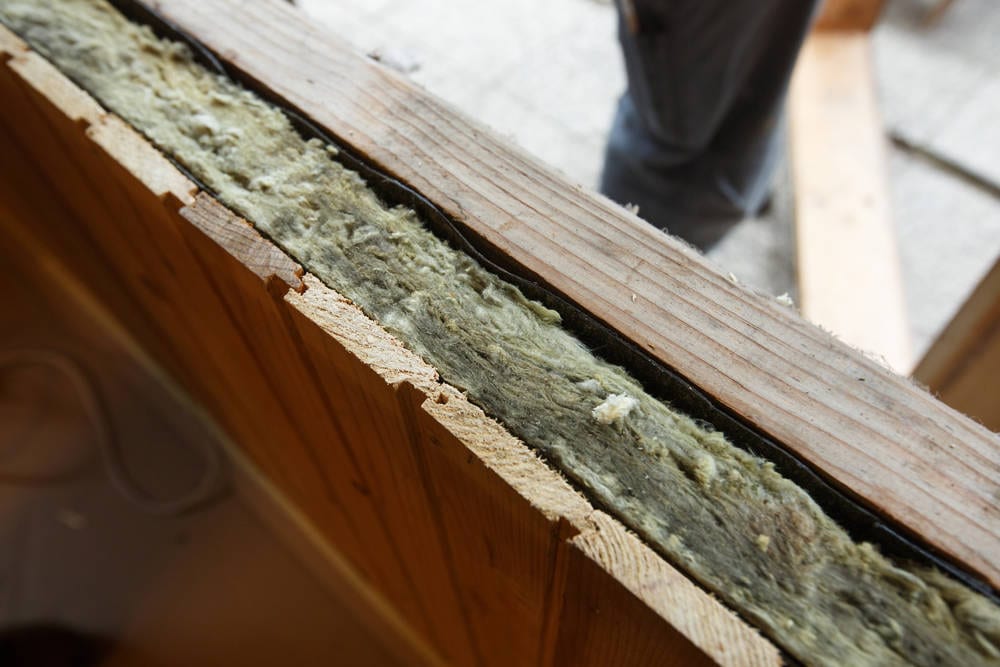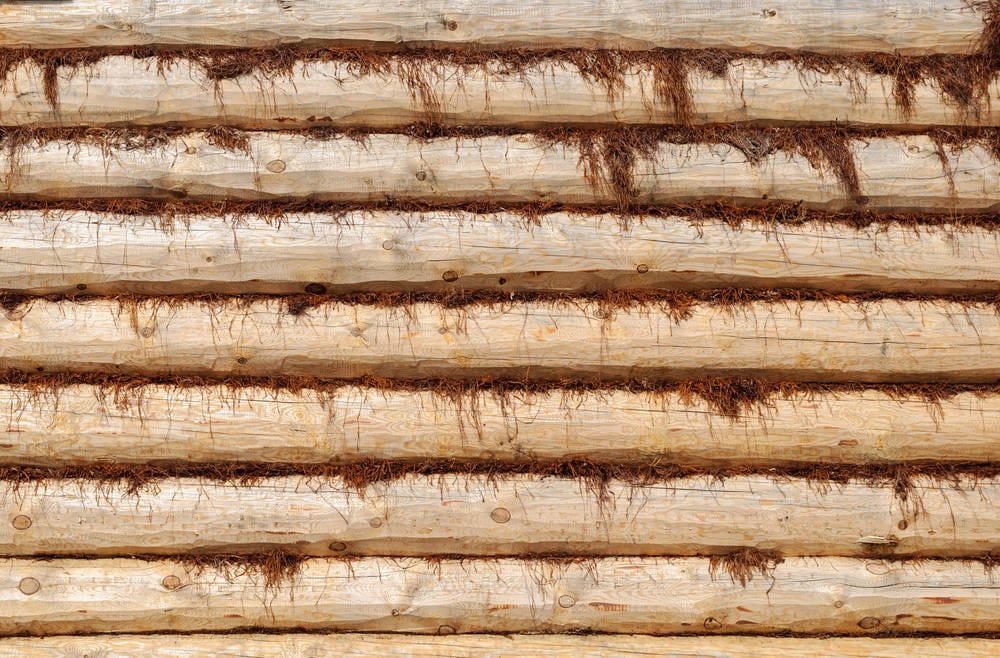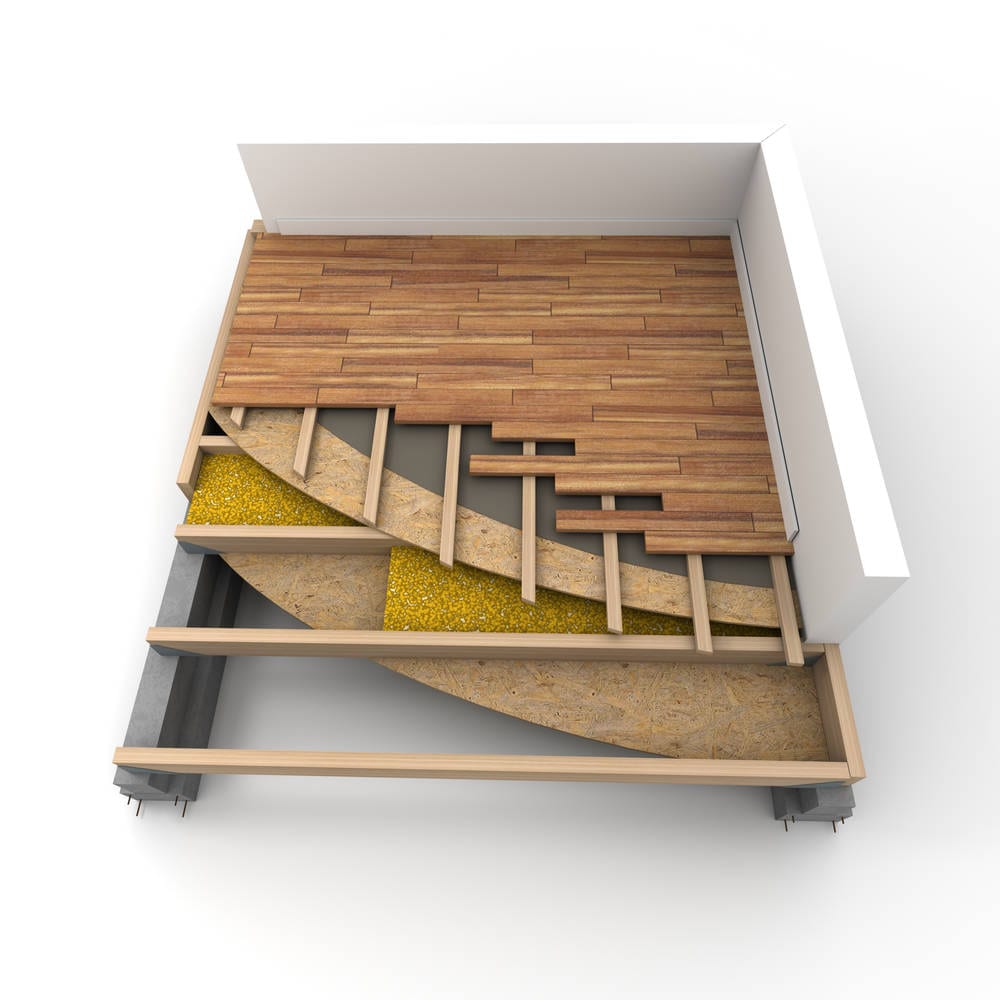An insulated log cabin is not necessarily a given thing upon the construction of a log home. You need to have your log home insulated the right way in order to protect your log cabin from the chill of winter and the heat of summer. Although logs are naturally good insulators, you still need to have your log home treated in order to become energy efficient. Take note that without the right insulation, your log home could lose 70% of the heat in your cabin through the floor and roof.

Why invest in an insulated log cabin?
Energy efficiency is the top reason why it is a good idea to invest in an insulation system for your log home. You’re able to avoid using the costly heating and cooling utilities if your log home is well-insulated. Moreover, an insulated log cabin maintains and regulates the right temperature inside. It also helps airflow and can ensure good indoor air quality.
Insulation and Energy Efficiency
There are basic components of insulation that could help you obtain an energy efficient log home. Make sure you learn and understand these basic terminologies that are always connected to an insulated log cabin:
- R-Value. This refers to the measurement of the heat flow resistance via the log home materials. There is an ideal thickness of log cabin material that ensures a higher R-value. A much higher R-Value is more amenable and better, as it offers more thermal resistance to the material used. A higher R-value for the log home material means it is a better insulator.
- U-Value. An insulated log cabin also deals with this particular term. The U-value is the measurement of the material’s heat loss in watts. A lower U-value is better as it would mean less heat is lost. There are other factors that are connected with U-values which also help to determine the insulating ability of a log home material.

Wood Materials for Insulated Log Cabin
How insulated and energy efficient your garden cabin is depends on the type of wood used for its construction. The thickness of the log also plays an important role in the energy efficiency of the log home. The wood R-value usually ranges between 1.41 per inch and 0.71 per inch for softwood and hardwood, respectively. An insulated log cabin has the ability to release heat back to the house and store heat as well.
Log Home Insulation – The Walls
The best quality and thickest logs should be chosen for the log home walls. This type of wall is ideal especially if your location is mainly exposed to a cold climate. An insulated log cabin is built well with top quality walls that offer seamless airtight joints. This construction also maximizes the energy efficiency of the log home and prevents drafts. Chinking is one of the most common ways in order to insulate your log cabin walls. This flexible sealant works to seal the logs in between.
The logs used in insulated log cabin tend to contract and expand throughout the year. Logs have the natural tendency to expand, especially during winter. However, at other times of the year, particularly the summer months, the logs naturally contract. Logs have these natural changes even if the materials are kiln dried.
Therefore, garden log cabins may vary in terms of their height all throughout the duration of a year. The changes are also more apparent when fixing cladding and studding to the walls for insulation purposes. Studding and cladding could restrict the log’s natural movement. It is difficult to achieve an insulated log cabin with gaps appearing constantly in the cabin walls. With the changes that result in wall gaps, your log home becomes less and less energy efficient.
Wall Insulation System
Using appropriately thick logs for the cabin walls is the right way to have your log home insulated. You can also hire a professional log home company in order to achieve an ideally effective insulated log cabin. Wall insulation is also possible through a sliding bracket system or a twin skin wall with cavity insulation.
Floor and Roof Insulation
If there are two components of your log home that require insulation, it would be the roof and floor.
Insulating the Floors
An insulated log cabin, particularly with a flooring system, helps you save approximately 20% of your yearly heating costs. A finished and properly fitted floor is the secret to top quality insulation. There are various insulation methods used such as installing a moisture resistant membrane to the floor. This method prevents damp from occurring and keeps the area underneath the cabin dry. The application of moisture resistant membrane on the floor helps prevent water from coming through yet allows vapour to escape.

Insulating the Roofs
It is possible to achieve a beautiful yet highly insulated log cabin. Using good quality and aged wood boards is the secret to a well-insulated log home roof. It is more preferable and you can achieve a better result compared to using plywood and the effect is still a rustic aesthetic for the log home. Just like flooring insulation, using a moisture resistant membrane onto the boards is also recommended. This application prevents the warm air from escaping the cabin into the airtight layer of insulation. Add batons to the roof in order to encase the insulation, especially if you are sticking with sheets.
Double Glazing the Cabin
One of the best ways to maximize the energy efficiency of your insulated log cabin is through double glazing the windows. Nevertheless, you also need air-tight walls, well-built and insulated floors and roofs to work with double-glazed window features. All these insulation methods result in a log home that maintains a good airflow and temperature inside the cabin all year round.
Achieving an insulated log cabin is absolutely possible without too much stress or too much high expenditure. Find a reputable log home company to help you with your insulation project today!












